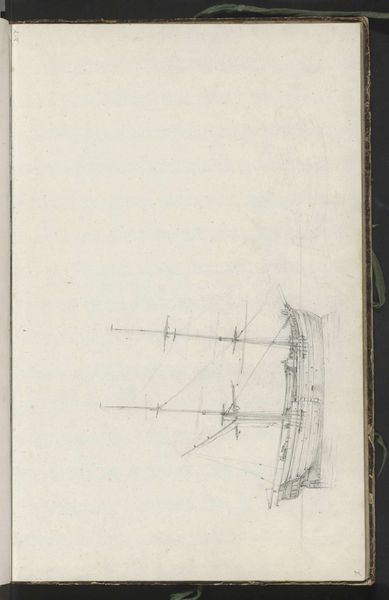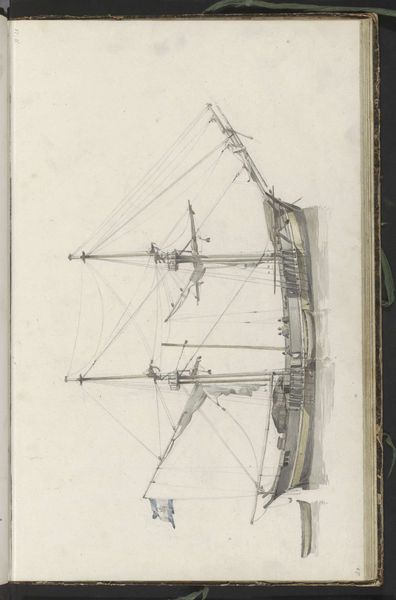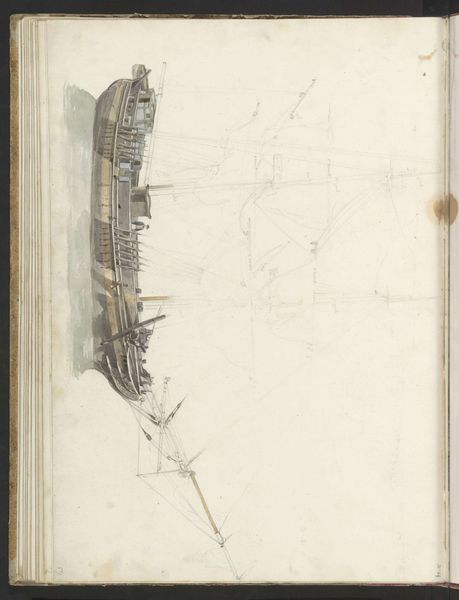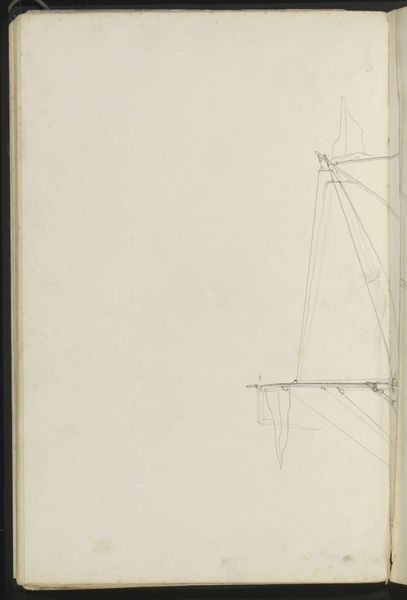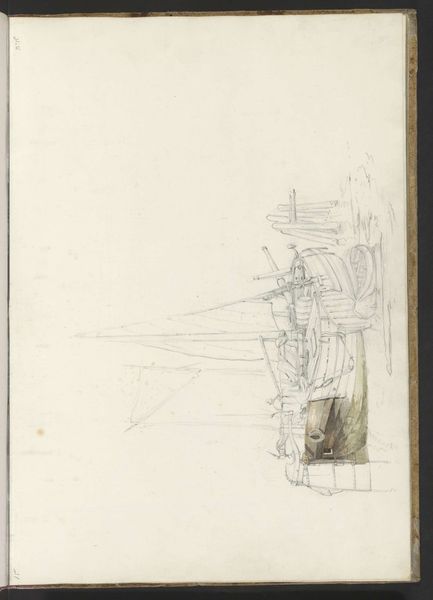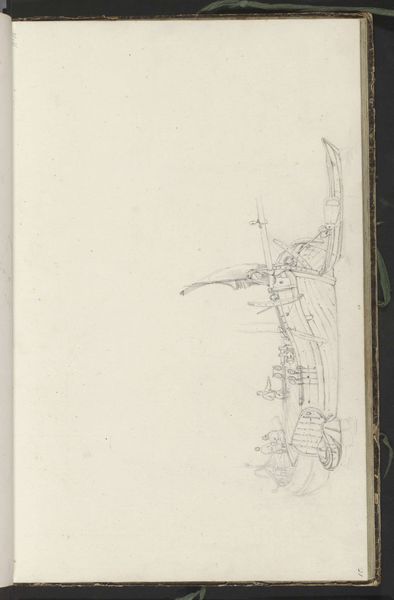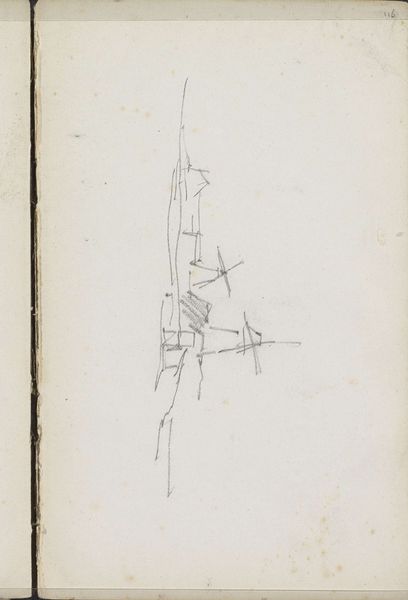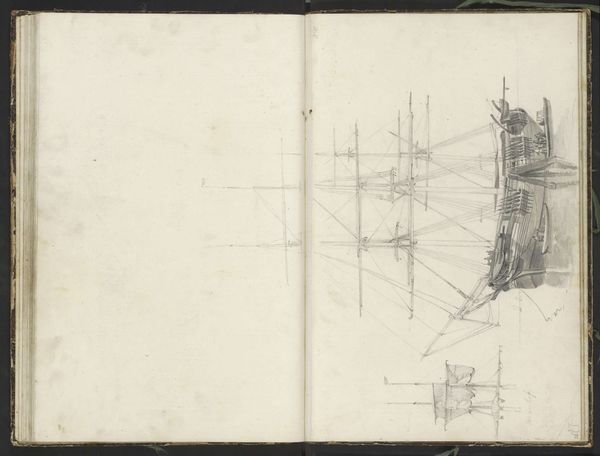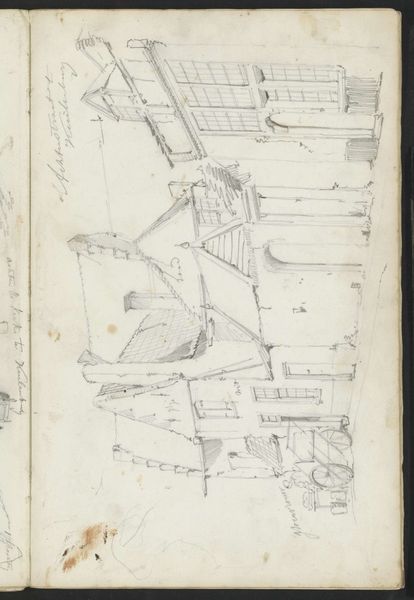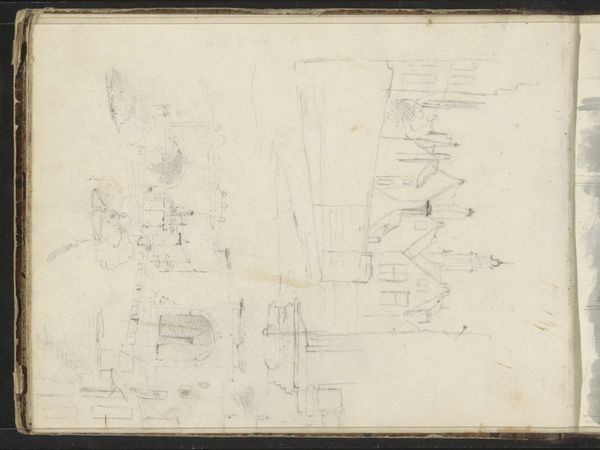
drawing, pencil
#
drawing
#
pen sketch
#
landscape
#
romanticism
#
pencil
Copyright: Rijks Museum: Open Domain
Curator: Welcome to the Rijksmuseum. We are standing before Johannes Christiaan Schotel's "Zeilschepen op kalm water," dating from about 1797 to 1838. The medium appears to be primarily pencil and pen. Editor: It's ghostly. There’s such quietude to it, despite the subject. The pale ground and light application of the strokes evoke a dreamlike stillness. Curator: Precisely. Notice the artist's use of line – the delicate, almost hesitant strokes to define the rigging and the hulls of the sailing ships. See how he uses hatching and cross-hatching to suggest depth and form, without resorting to heavy shading. Editor: I wonder about these ships in their specific moment. Maritime trade shaped much of this era, and ships facilitated global exchange but also carried the burdens of colonization. Curator: Absolutely, and we should also observe that Schotel here privileges formal clarity over naturalistic representation. The lines aren’t attempting a photorealistic image of the ships. They're far more evocative, capturing their essence. Editor: But can we separate that essence from the social realities that shaped its construction? Schotel might emphasize formal elements, but his artistic decisions would always be deeply entwined with social, historical, and cultural influences. These are not just sailboats in still waters; these vessels symbolize an era marked by profound change and conflict. The choice of subject reveals particular interests in a moment when ship-borne commerce and colonialism defined geopolitical relationships. Curator: An interesting counterpoint to be sure. Nonetheless, look closely at the top section, where the artist experimented with rendering the ships. This visual articulation of varied designs underscores the significance of structure. Editor: True, a comprehensive understanding means integrating context and form and letting it push back on the comfortable distance we might feel from a simple seascape. It compels me to consider these ghostly shapes and see them with fresh, more critical eyes. Curator: A worthwhile call. What I see in Schotel's art, ultimately, is a meditation on shape and form. Editor: And in doing so, invites further questions that demand context. Thank you.
Comments
No comments
Be the first to comment and join the conversation on the ultimate creative platform.
